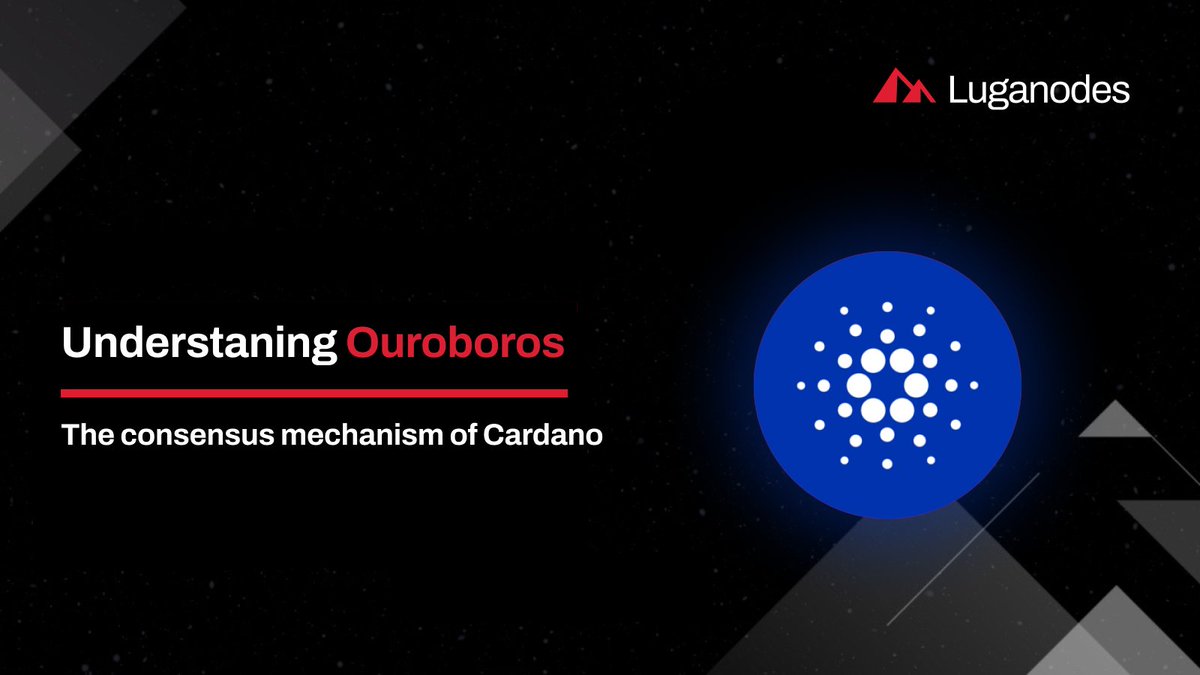
1/
The @Cardano ecosystem is one of the most exciting ecosystems out there,
We take pride in being a leading validator & contributing towards the network's security🔐
Here's a short 🧵 to understand the networks consensus & #staking mechanism👇
The @Cardano ecosystem is one of the most exciting ecosystems out there,
We take pride in being a leading validator & contributing towards the network's security🔐
Here's a short 🧵 to understand the networks consensus & #staking mechanism👇

2/
#Ouroboros is the Proof-of-Stake (#PoS) consensus mechanism used by the #Cardano #blockchain.
It allows users to delegate their $ADA to a stake pool operator and earn rewards while still maintaining ownership of their tokens💰
#Ouroboros is the Proof-of-Stake (#PoS) consensus mechanism used by the #Cardano #blockchain.
It allows users to delegate their $ADA to a stake pool operator and earn rewards while still maintaining ownership of their tokens💰
3/
It uses a variant of PoS called Delegated-Proof-of-Stake (DPoS) and divides time into epochs and slots, with each node using a verifiable random function (VRF) to generate a random number to select the slot leader🎰
It uses a variant of PoS called Delegated-Proof-of-Stake (DPoS) and divides time into epochs and slots, with each node using a verifiable random function (VRF) to generate a random number to select the slot leader🎰
4/
The current version of Ouroboros, Ouroboros Praos, adds a layer of security by preventing DDOS attacks on slot leaders by not publicly announcing the slot leader ahead of time🛡️
The current version of Ouroboros, Ouroboros Praos, adds a layer of security by preventing DDOS attacks on slot leaders by not publicly announcing the slot leader ahead of time🛡️
5/
#Cardano has had a strong record of uptime since its launch over five years ago, and its consensus mechanism has been adopted by other networks like @Polkadot and @MinaProtocol📈
#Cardano has had a strong record of uptime since its launch over five years ago, and its consensus mechanism has been adopted by other networks like @Polkadot and @MinaProtocol📈
6/
Transaction fees are pooled and distributed evenly to all pools that produced blocks during an epoch, and the #blockchain guarantees that every delegator receives rewards.
#Stake becomes active after two epochs and rewards are distributed after the third💰
Transaction fees are pooled and distributed evenly to all pools that produced blocks during an epoch, and the #blockchain guarantees that every delegator receives rewards.
#Stake becomes active after two epochs and rewards are distributed after the third💰
7/
The treasury takes a fixed 20% of transaction fees, which can be adjusted through the governance process, to support sustainable development.
#Decentralization is incentivized by a saturation mechanism that causes pools with too much stake to experience diminishing returns🌐
The treasury takes a fixed 20% of transaction fees, which can be adjusted through the governance process, to support sustainable development.
#Decentralization is incentivized by a saturation mechanism that causes pools with too much stake to experience diminishing returns🌐
8/
The K parameter, originally 250 but later updated to 500, controls the desired number of pools, and increasing it to 1000 is under discussion for more #decentralization.
#Cardano does not require slashing thanks to its reward-sharing scheme🫂
The K parameter, originally 250 but later updated to 500, controls the desired number of pools, and increasing it to 1000 is under discussion for more #decentralization.
#Cardano does not require slashing thanks to its reward-sharing scheme🫂
9/
#stake your $ADA with @luganodes and start earning ~3.25% rewards 🚀
Check out our #staking guide to learn How to stake $ADA using @YoroiWallet 👇
rb.gy/ldsnsm
#stake your $ADA with @luganodes and start earning ~3.25% rewards 🚀
Check out our #staking guide to learn How to stake $ADA using @YoroiWallet 👇
rb.gy/ldsnsm
• • •
Missing some Tweet in this thread? You can try to
force a refresh






